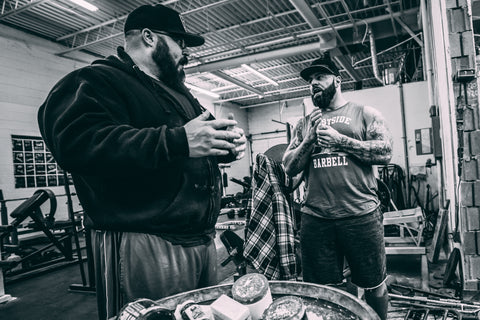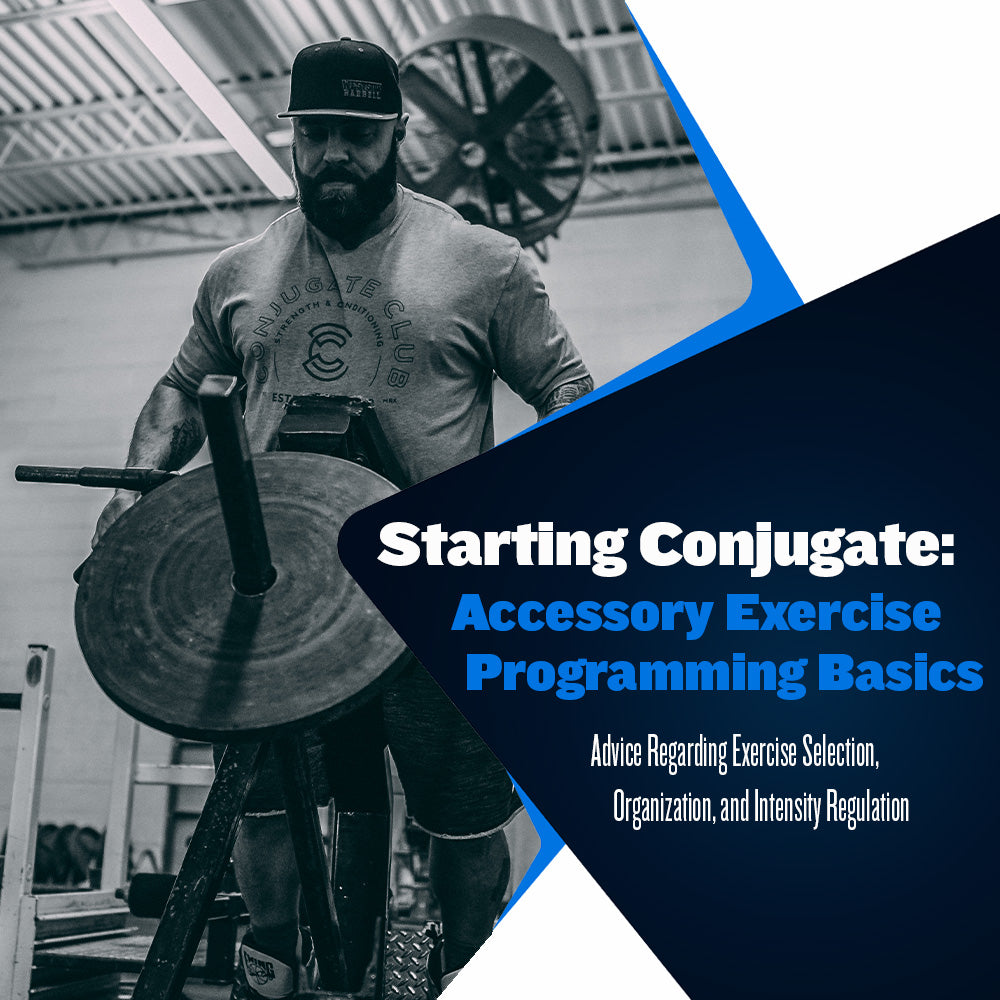Starting Conjugate: The Basics of Accessory Exercise Programming

If you have read the articles I have written the past couple of months, you know I frequently discuss the importance of utilizing exercise selection to address identified weaknesses or lagging muscle groups. Exercise selection not only matters for the main exercise of the day, but it also plays a tremendous role in your accessory work.
By selecting the correct accessory exercises, you can increase the rate at which you make gains in strength and improvements in technique. However, the correct selection of your accessory exercises is only half the battle; you must also train these exercises at the proper intensity levels.
Failure to meet or cross certain intensity thresholds will render an exercise worthless. For our main movements, we control this by using percentages to ensure we are training within intensity ranges proven effective in addressing the strength we intend to improve. Without using percentage guidelines, we risk training too light, which wastes our time, or training too heavy and not experiencing the intended training effect.
What about accessory exercises? Here are the strategies we employ to ensure we train our accessory exercises at the correct intensity levels at Westside Barbell:
The Primary Accessory Exercise
When writing a Conjugate program, you will choose a main exercise of the day, followed by a list of accessory exercises that focus on training the muscle groups involved in the lift you are preparing for. A primary accessory exercise is one strategy we employ when choosing our accessory exercises.
A primary accessory exercise is an exercise that could be used as the main exercise of the day if necessary. However, it is being used to expose the athlete to necessary stimuli at a controlled intensity level to induce a specific training effect.
A typical upper body primary accessory exercise would be the overhead press or push press. We would choose exercises such as front squats or rack pulls for the lower body. These exercises wouldn’t be performed for a top set of one, three, or five reps but instead for multiple sets at a specific intensity.
Intensity-wise, our primary accessory exercises are typically performed using less than 80% of the one rep max associated with that exercise. For instance, if you bench pressed a max effort single for your main exercise, you would segway into a standing overhead press for four sets of five reps at 75% for your primary accessory exercise.
You do not always have to include a primary accessory exercise. However, when used, the primary accessory exercise will always be the first exercise performed after the main exercise of the day. It will also be the only accessory exercise that follows a precise percentage when selecting your working weight.
Secondary Accessory Exercises
Even though these are secondary accessory exercises, they are just as important as the primary ones. Typically, the primary accessory exercise will feature a multi-joint movement only, while secondary accessory exercises will feature a mix of multi and single-joint exercises.
Selection of the primary accessory exercise should be based on which exercise allows you to target as many of the muscle groups involved in the competition lift you are preparing for as you can. Your secondary accessory exercises should take it a step further and begin targeting those involved muscle groups more directly.
This means you will use exercises such as skullcrushers, hammer curls, hack squats, Romanian deadlifts, hamstring curls, etc., to bring up muscle groups you have identified as weak. If the primary accessory exercise is used to improve strength and skill in a multi-joint competition movement, secondary accessory exercises are used to specifically increase the strength and development of the involved muscle groups.
When selecting secondary accessory exercise working weights, you will always use the heaviest weight you can use while still completing all prescribed sets and reps with proper form. For some, you may be able to use your heaviest weight right off of the bat on the first set. Others may need to hit two or three sets before hitting their heaviest set. What matters is you strive to use weights that challenge you, not just go through the motions.
Remember, I said the heaviest weight you can use while completing all prescribed sets and reps with proper form. This doesn’t mean you should use the heaviest weight possible; it means to use a weight that challenges you each set. As the saying goes, if it doesn’t challenge you, it doesn’t change you.
Putting It All Together
Here is an example of a Conjugate training day featuring a main exercise, a primary accessory exercise, and secondary accessory exercises:
Max Effort Lower Main Exercise
SSB Squat - work up to a top set single
Primary Accessory Exercise
Giant Cambered Bar Good Mornings - 4 x 5-8
Secondary Accessory Exercises
Hack Squats - 3 x 10-15
Inverse Curl - 4 x AMRAP
KB Swings - 3 x 15-20
Abs - 5 x 20
As you can see, we have a max effort main exercise using the SSB bar to squat a max effort single. Knowing that the SSB will place greater emphasis on the quads (anterior), we select Giant Cambered Bar Good Mornings as our primary accessory exercise to target the low back, glutes, and hamstrings (posterior).
The secondary accessory exercises include exercises that provide a balanced targeting of the anterior and posterior muscle groups and will assist in increasing the strength and movement quality of the competition lift we want to improve (squat and deadlift).
Please visit our website for more information regarding Conjugate Method programming and program design.
Sources:
Simmons, L. (2007). Westside Barbell Book of Methods. Westside Barbell.
Verkhoshansky, Y., & Siff, M. C. (2009). Supertraining. Verkhoshansky.





